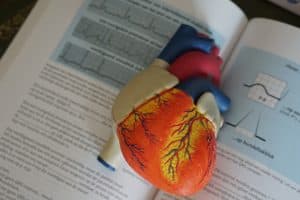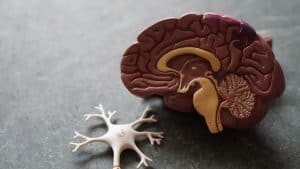RNA Interference using nanoparticles hits target in human patients
pharmafile | April 29, 2010 | News story | Research and Development | SiRNA, nanoparticles, rnai
US researchers have shown that a targeted nanoparticle can penetrate cancer cells in order to deliver small interfering RNAs (siRNAs), and turn off the production of an important cancer protein
The research is good news for drug developers hoping to use ‘RNA interference’ (RNAi) methods to create new targeted treatments.
A multi-institutional team of researchers and clinicians has also demonstrated for the first time that this new type of therapy, infused into the bloodstream, can make its way to human tumours in a dose-dependent fashion, that is, a higher number of nanoparticles sent into the body leads to a higher number of nanoparticles in the tumour cells. These two findings were achieved in phase I clinical trials in which the investigators are testing a nanoparticle-siRNA construct as a cancer therapy.
These results, published in Nature, demonstrate the feasibility of using both nanoparticles and RNAi-based therapeutics in patients, and open the door for future “game-changing” therapeutics that attack cancer and other diseases at the genetic level, says team leader Mark E. Davis of the California Institute of Technology. Dr. Davis is also a member of the Nanosystems Biology Cancer Center, a National Cancer Institute Center for Cancer Nanotechnology Excellence.
The discovery of RNAi, the mechanism by which double strands of RNA silence genes, won researchers Andrew Fire and Craig Mello the 2006 Nobel Prize in Physiology or Medicine. The scientists first reported finding this novel mechanism in worms in a 1998 Nature paper. Since then, the potential for this type of gene inhibition to lead to new therapies for diseases such as cancer has been highly touted.
“RNAi is a new way to stop the production of proteins,” says Dr. Davis. What makes it such a potentially powerful tool, he adds, is the fact that its target is not a protein, the typical target for anticancer drugs. The vulnerable areas of a protein may be hidden within its three-dimensional folds, making it difficult for many therapeutics to reach them. In contrast, RNA interference targets the messenger RNA (mRNA) that encodes the information needed to make a protein in the first place.
“In principle,” says Dr. Davis, “that means every protein now is druggable because its inhibition is accomplished by destroying the mRNA. And we can go after mRNAs in a very designed way given all the genomic data that are and will become available.”
Still, there have been numerous potential roadblocks to the application of RNAi technology as therapy in humans. One of the most problematic has been finding a way to ferry the therapeutics, which are made up of fragile siRNAs, into tumour cells after direct injection into the bloodstream. Dr. Davis, however, had a solution. Even before the discovery of RNAi, he and his team had begun working on ways to deliver nucleic acids to cells via the blood stream. They eventually created a four-component system, featuring a unique polymer called cyclodextrin, that self-assembles in the presence of RNA into a targeted, siRNA-containing nanoparticle. The siRNA delivery system is under clinical development by Calando Pharmaceuticals, Inc., based in Pasadena, California.
“These nanoparticles are able to take the siRNAs to the targeted site within the body,” says Dr. Davis. Once they reach their target, in this case, the cancer cells within tumours, the nanoparticles enter the cells and release the siRNAs.
As part of their study, the team was able to detect and image nanoparticles inside cells biopsied from the tumours of several of the phase I trial’s participants. In addition, Dr. Davis and his colleagues were able to show that the higher the nanoparticle dose administered to the patient, the higher the number of particles found inside the tumour cells—the first example of this kind of dose-dependent response using targeted nanoparticles. Even better, Dr. Davis says, the evidence showed the siRNAs had done their job. In the tumour cells analysed by the researchers, the mRNA encoding the cell-growth protein ribonucleotide reductase – the target of the siRNA encapsulated in the nanoparticle – had been degraded. This degradation, in turn, led to a loss of the protein.
mRNA fragments were not only found were exactly the length and sequence they should be if they’d been cleaved in the spot targeted by the siRNA, notes Dr. Davis. “It’s the first time anyone has found an RNA fragment from a patient’s cells showing the mRNA was cut at exactly the right base via the RNAi mechanism,” he says. “It proves that the RNAi mechanism can happen using siRNA in a human.”
This work, which is detailed in a paper titled, “Evidence of RNAi in humans from systemically administered siRNA via targeted nanoparticles,” was supported in part by the NCI Alliance for Nanotechnology in Cancer, a comprehensive initiative designed to accelerate the application of nanotechnology to the prevention, diagnosis, and treatment of cancer. Investigators from the Jonsson Compresensive Cancer Center, the University of California, Los Angeles, South Texas Accelerated Research Therapeutics (START), the City of Hope Comprehensive Cancer Center, and Calando Pharmaceuticals also participated in this study.
Related Content

Alnylam and Roche partner for RNAi therapeutic for treatment of hypertension
Alnylam Pharmaceuticals has announced that it has entered a strategic agreement with Roche for the …
Alnylam cuts workforce by a third
Alnylam will cut 33% of its workforce this year as it looks to focus on …
Nanoparticles to target Alzheimer’s disease
Researchers at Lancaster University funded by the European Union are hoping to develop a new …








